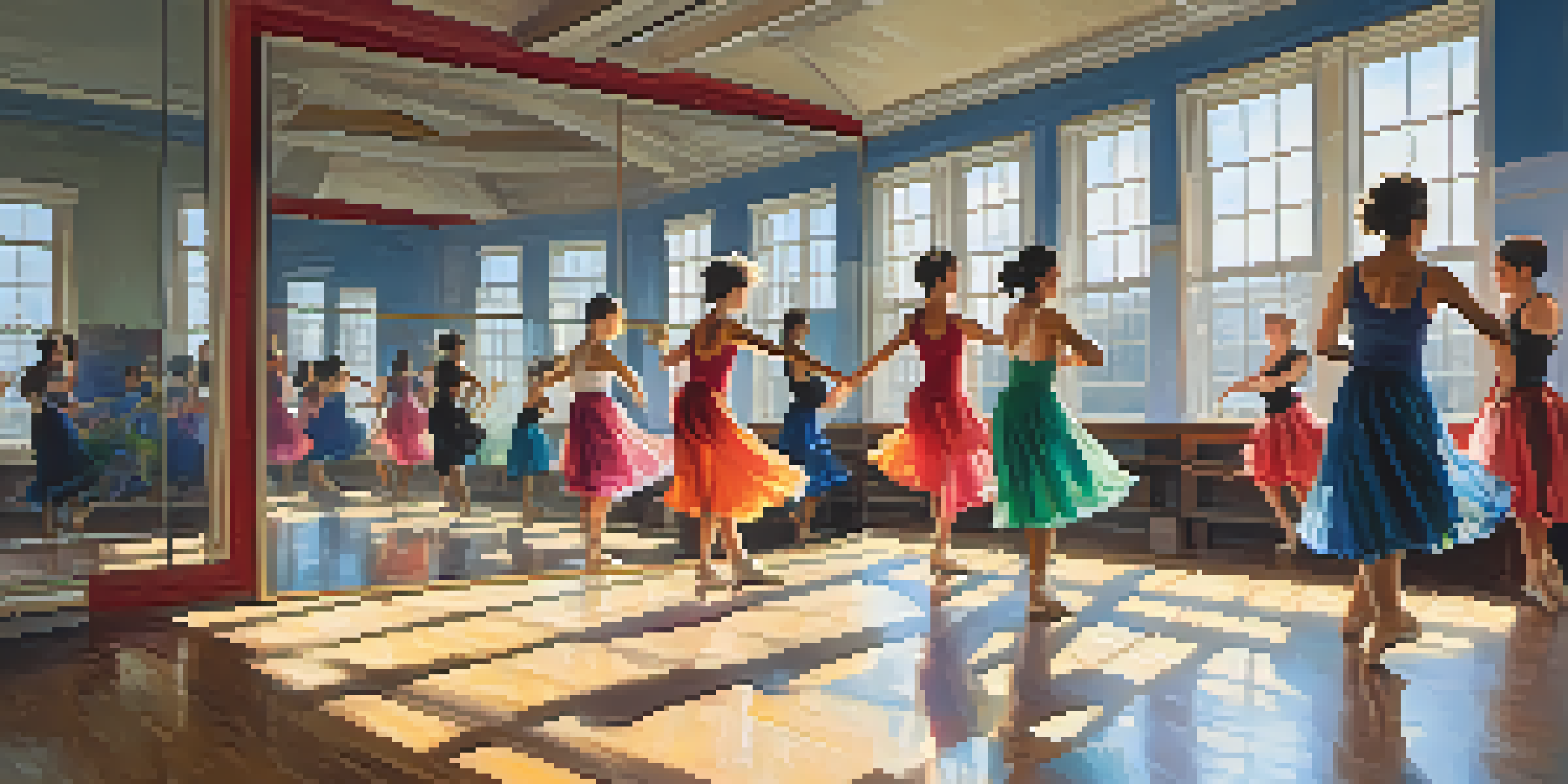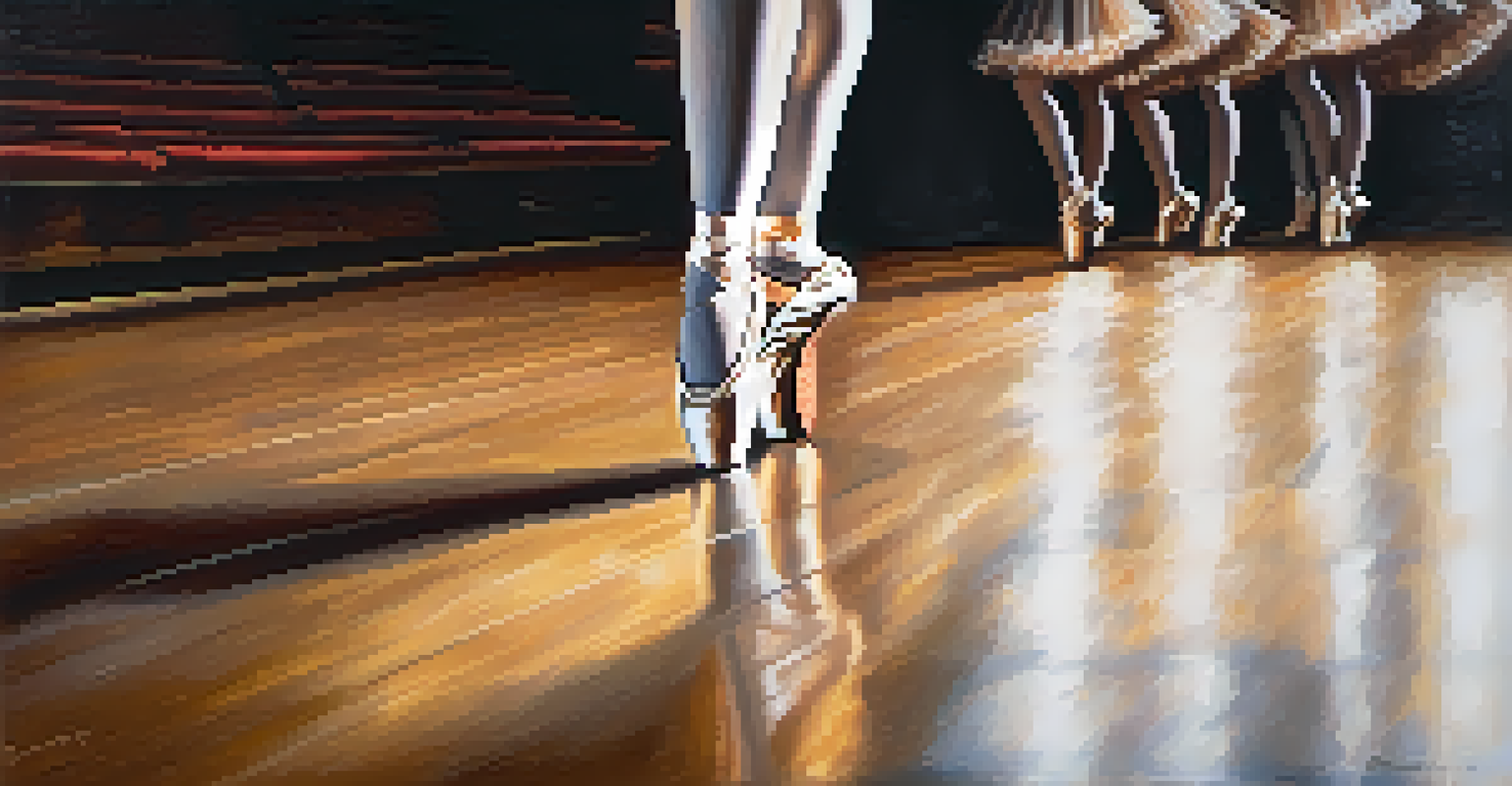Neurological Benefits of Dance: A Scientific Overview

Dance and Brain Plasticity: A Dynamic Duo
Dance is more than just a form of expression; it actively promotes brain plasticity. This ability of the brain to reorganize itself by forming new neural connections is crucial for learning and memory. When you dance, you're not just moving; you're enhancing your brain's adaptability and resilience.
Dance is the joy of movement and the heart of life.
Research shows that engaging in dance can stimulate various areas of the brain, particularly those involved in coordination, balance, and spatial awareness. This stimulation helps to strengthen these neural pathways, making them more efficient. Think of it as a workout for your brain, much like how physical exercise benefits your muscles.
Additionally, dance often requires improvisation and quick decision-making, further challenging the brain. This mental engagement can lead to improved cognitive function, making dance an enjoyable way to keep your mind sharp as you age.
Improving Memory Through Dance: A Rhythmic Approach
Memory is a key area where dance has shown significant benefits. Studies indicate that learning dance routines can enhance both short-term and long-term memory. The repetitive nature of dance moves helps reinforce memory retention, much like how we learn songs by repeating them.

Moreover, the combination of music and movement can create strong associations, making it easier to recall information. For example, many dancers find themselves remembering choreography more effectively when it's paired with a specific song. This connection showcases how rhythm can serve as a mnemonic device.
Dance Boosts Brain Health
Engaging in dance enhances brain plasticity, improving cognitive flexibility and memory retention.
In essence, dancing not only helps you remember the steps but also engages your brain in a way that strengthens your overall memory capacity. So next time you hit the dance floor, know that you're also giving your memory a workout!
Dance as a Stress Reliever: The Neurological Perspective
Engaging in dance can be a powerful antidote to stress. When you dance, your body releases endorphins—those feel-good hormones that help counteract stress and anxiety. The rhythmic movement of dance serves as a natural way to unwind, providing an emotional release that can be quite therapeutic.
Dance is the hidden language of the soul.
Scientific studies have shown that dance can lower cortisol levels, the hormone associated with stress. Lowering these levels not only improves mood but also enhances overall brain function. Think of dance as a fun escape, a way to shake off the weight of a stressful day while boosting your mental well-being.
Additionally, the social aspect of dance, whether in a class or a group setting, fosters community and connection. This social bonding can provide support, further alleviating feelings of loneliness and stress, showcasing how dance nurtures both body and mind.
The Cognitive Benefits of Learning Dance Styles
Learning different dance styles is not just about mastering steps; it also boosts cognitive flexibility. This adaptability is essential for problem-solving and creativity, as it encourages us to think outside the box. Each style has its own unique rhythms and techniques, challenging your brain to adapt.
Additionally, as you learn new routines, you're constantly engaging in critical thinking and spatial awareness. This mental gymnastics can help improve your overall cognitive abilities, making you more agile in both thought and movement. It's like doing a puzzle with your body and mind working in harmony.
Dance Relieves Stress Effectively
Dancing releases endorphins and lowers cortisol levels, providing a natural way to reduce stress and improve mood.
Thus, diving into various dance forms not only enhances your physical skills but also sharpens your cognitive capabilities. So whether it's salsa, tango, or hip-hop, each dance style offers cognitive rewards that transcend the dance floor.
Dance as a Tool for Enhancing Coordination and Balance
Dance is a fantastic way to improve coordination and balance, which are vital components of neurological health. As you learn to move your body rhythmically, you're also training your brain to communicate more effectively with your muscles. This holistic engagement fosters better motor skills.
Studies have shown that regular dancing can lead to significant improvements in balance, particularly in older adults. This is crucial because maintaining balance can prevent falls and injuries, which are common as we age. Think of dance as a fun way to strengthen your body's foundational skills.
Moreover, the practice of synchronizing movements with music enhances your body awareness, making you more attuned to your physical presence. The more you dance, the more in sync your body and mind become, creating a beautiful balance that extends beyond the dance floor.
The Emotional Benefits of Dance: A Neurological Insight
Dancing is not only a physical activity but also a profound emotional experience. Engaging in dance can elevate your mood and foster feelings of joy and happiness. This emotional uplift stems from various neurological processes, including the release of dopamine, a neurotransmitter linked to pleasure.
Moreover, dance allows for self-expression and creativity, providing an outlet for emotions that might otherwise be difficult to articulate. This emotional release can lead to increased resilience and better mental health. Just like a painter uses colors, dancers use movement to express their inner feelings.
Enhances Coordination and Balance
Regular dancing improves coordination and balance, which are essential for maintaining overall neurological health.
As a result, dance becomes a powerful tool for emotional regulation, helping individuals cope with challenges more effectively. So, the next time you dance, remember that you’re not just moving your body; you’re also nurturing your emotional well-being.
Conclusion: Embracing Dance for Neurological Wellness
In conclusion, the neurological benefits of dance are both profound and multifaceted. From enhancing brain plasticity to improving memory and emotional well-being, dance offers a holistic approach to brain health. Engaging in dance is like giving your brain a full workout while having fun.
As we continue to explore the science behind dance, it's clear that this art form holds significant potential for promoting cognitive and emotional health. Whether you dance as a hobby or take classes, remember that each step you take is a step toward better brain function.

So, lace up your dancing shoes and embrace the rhythm. Not only will you enjoy yourself, but you’ll also be investing in your neurological wellness for years to come.